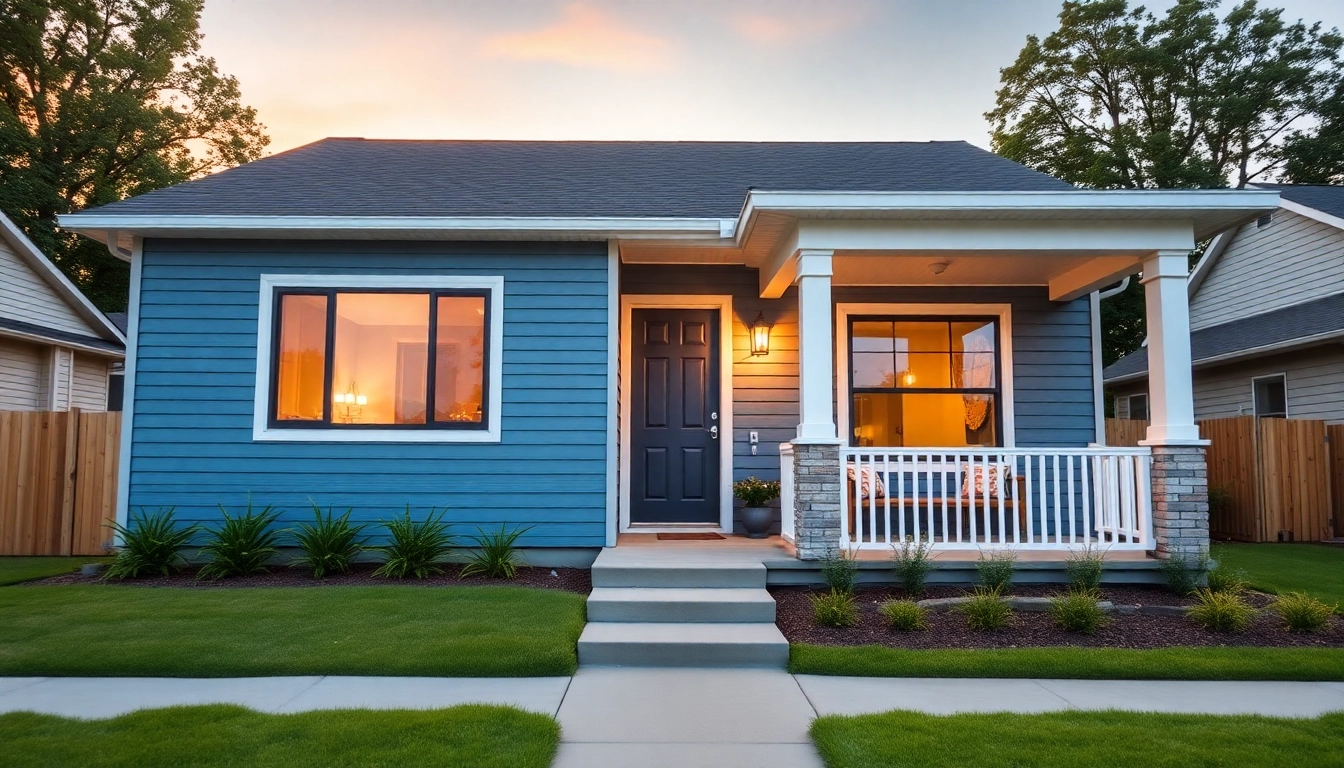Understanding Smart Home Technology
In an era dominated by digital devices, smart home technology has surged in popularity, offering homeowners the ability to integrate automation into their daily lives. Smart home gadgets enhance convenience, improve energy efficiency, and provide added security. From smart speakers that respond to voice commands to intelligent security systems that send alerts to your smartphone, the landscape of best smart home gadgets continues to evolve. This article aims to explore the intricacies of smart home technology, discuss the benefits of these devices, and highlight some of the leading products available today.
What Are Smart Home Gadgets?
Smart home gadgets are electronic devices that connect to the internet, allowing homeowners to control them remotely. These devices can range from everyday appliances like light bulbs and thermostats to sophisticated systems that manage multimedia and security. By utilizing various connectivity protocols, such as Wi-Fi, Bluetooth, or Zigbee, these gadgets sync together and can often be controlled via a smartphone app or voice commands through smart assistants.
Benefits of Smart Home Devices
The integration of smart home gadgets into everyday life brings numerous benefits:
- Energy Efficiency: Many smart devices help reduce energy consumption, such as smart thermostats that adapt to your schedule and smart lighting that turns off when not in use.
- Convenience: Automation allows for routine tasks, such as turning on lights or adjusting the thermostat, to be handled seamlessly through apps or voice control.
- Enhanced Security: Smart security systems offer real-time alerts, video surveillance, and remote access, enabling homeowners to monitor their properties from anywhere.
- Increased Comfort: Smart devices can create an environment tailored to your preferences, whether it’s adjusting the lighting based on your mood or maintaining the perfect temperature.
Types of Smart Home Gadgets Explained
Smart home devices can be categorized into several types, each serving its unique purpose:
- Smart Lighting: These include bulbs and fixtures that can be controlled via smartphone applications or voice commands, supporting features like dimming and color changes.
- Smart Security Gadgets: This category comprises security cameras, doorbell cameras, motion detectors, and smart locks that enhance home safety.
- Smart Thermostats: These devices learn your heating and cooling patterns, optimizing energy use for maximum efficiency.
- Smart Appliances: Refrigerators, ovens, and washing machines that offer remote monitoring and control, making household management more efficient.
- Smart Assistants: Devices like Amazon Echo or Google Home act as hubs to control other smart devices through voice commands.
Key Features of the Best Smart Home Gadgets
Integration and Compatibility
One of the primary considerations when selecting smart home gadgets is their ability to integrate with other devices. Many brands focus on creating ecosystems—groups of products that work seamlessly together. Notable platforms include Google Assistant, Amazon Alexa, and Apple HomeKit. When choosing a device, it’s essential to ensure it is compatible with your existing systems to allow for ease of control and automation.
User-Friendly Interfaces
Smart home gadgets should have intuitive interfaces that enhance user experience. A well-designed app can significantly improve how users interact with their devices. Features to look for include:
- Ease of Setup: Devices that can be installed with minimal technical knowledge and offer straightforward onboarding processes.
- Customizable Controls: The ability to create routines, set schedules, and create automation scenarios that are easy to configure.
- Accessibility: Options for voice control and user-friendly apps ensure that all household members can use the devices comfortably.
Security Features in Smart Devices
Security is a critical concern for any technology connected to the internet. The best smart home gadgets incorporate robust security features such as:
- Encryption: Ensuring data transmission is secured to prevent unauthorized access.
- Two-Factor Authentication: An additional layer of security that requires more than just a password to access a device or account.
- Regular Updates: Manufacturers should frequently update their devices to patch vulnerabilities and improve functionality.
A Guide to the Best Smart Home Gadgets in 2025
Smart Lighting Solutions
Smart lighting solutions are not just about convenience; they can set the mood for your home environment. Popular products include:
- Philips Hue: A versatile range of smart bulbs that can change colors, be controlled remotely, and sync with music and movies.
- LIFX: Known for their vibrant colors and no hub requirement, LIFX lights can deliver impressive illumination tailored to your preferences.
Integration with virtual assistants allows users to control their lights through voice commands, enhancing user convenience.
Home Security Devices
Home security devices have become indispensable in safeguarding personal property. Key products to consider include:
- Ring Video Doorbell: Allows homeowners to see and communicate with visitors remotely through a camera and speaker system.
- Arlo Pro Security Cameras: Featuring high-definition video, smart alerts, and night vision, empowering users with comprehensive surveillance options.
These gadgets can be connected to mobile applications, making them accessible from anywhere, providing real-time updates on home security.
Smart Thermostats for Energy Efficiency
Smart thermostats, like the Ecobee and Nest, are designed to optimize heating and cooling. Key features include:
- Learning Capabilities: These devices learn from user behavior and adjust temperatures accordingly for comfort and energy savings.
- Remote Access: Control your home temperature from anywhere through a smartphone app, which can be particularly useful for energy management.
These thermostats often provide energy reports, helping users understand their consumption and identify ways to save on utility bills.
Choosing the Right Smart Home Gadgets for Your Space
Assessing Your Home’s Smart Needs
Before delving into the world of smart home gadgets, it’s essential to assess which areas of your home would benefit most from automation. Consider the following:
- Common Use Areas: Identify high-traffic areas in your home where convenience can be improved, such as kitchens and living rooms.
- Security Needs: Areas vulnerable to intruders may need enhanced security measures.
- Energy Efficiency: Consider rooms that consume high energy, like those with heating and cooling systems that could benefit from smart thermostats.
Budgeting for Smart Home Improvements
Setting a budget is crucial in navigating the myriad of smart gadgets available. Factors to consider include:
- Initial Setup Costs: Estimate the cost of devices and installation services if necessary.
- Long-Term Savings: Assess potential savings from energy-efficient devices, which can offset initial investments over time.
- Scalability: Choose devices that can grow with your needs; starting small may allow for budget flexibility as you expand your system.
Recommendations Based on User Feedback
Reviews and feedback on smart home gadgets can provide insight into performance and reliability. Consider devices that consistently receive high ratings from users for:
- Functionality: Products that perform as advertised and offer beneficial features.
- Customer Service: Reliable support from manufacturers can be crucial when dealing with technical issues.
- Longevity: Gadgets that are durable and receive regular software updates tend to maintain value over time.
Future Trends in Smart Home Gadgets
Innovations Expected in Smart Home Technology
The landscape of smart home technology is perpetually evolving, with ongoing innovations aimed at enhancing user experience:
- Interoperability: Increased compatibility between different manufacturers’ products, enabling seamless integration across platforms.
- Improved AI Features: Incorporation of more advanced artificial intelligence that predicts user preferences and automates more tasks.
- Home Health Gadgets: Devices that monitor health metrics using smart technology will become more prevalent, helping users manage their wellness directly from home.
Impact of AI on Smart Home Devices
Artificial Intelligence is revolutionizing how smart gadgets operate; advanced AI enhances the functionality of devices by:
- Personalization: AI can learn users’ habits, automating preferences automatically over time.
- Predictive Analysis: Devices can anticipate needs—like adjusting heating based on historical data of temperature and user schedules.
- Voice Recognition: Improved AI enhances the accuracy of voice commands, making interactions more seamless and natural.
Predictions for Smart Home Market Growth
The smart home market shows no signs of slowing down, and forecasts suggest robust growth in the coming years. Key trends include:
- Increased Adoption Rates: As prices decrease and technology improves, more consumers will invest in smart home solutions.
- Rising Awareness: Enhanced marketing about the benefits and functionalities of smart home gadgets will increase consumer interest.
- Next-Gen Connectivity: The rollout of 5G technology is expected to enhance smart home device capabilities, allowing for faster and more reliable connections.



